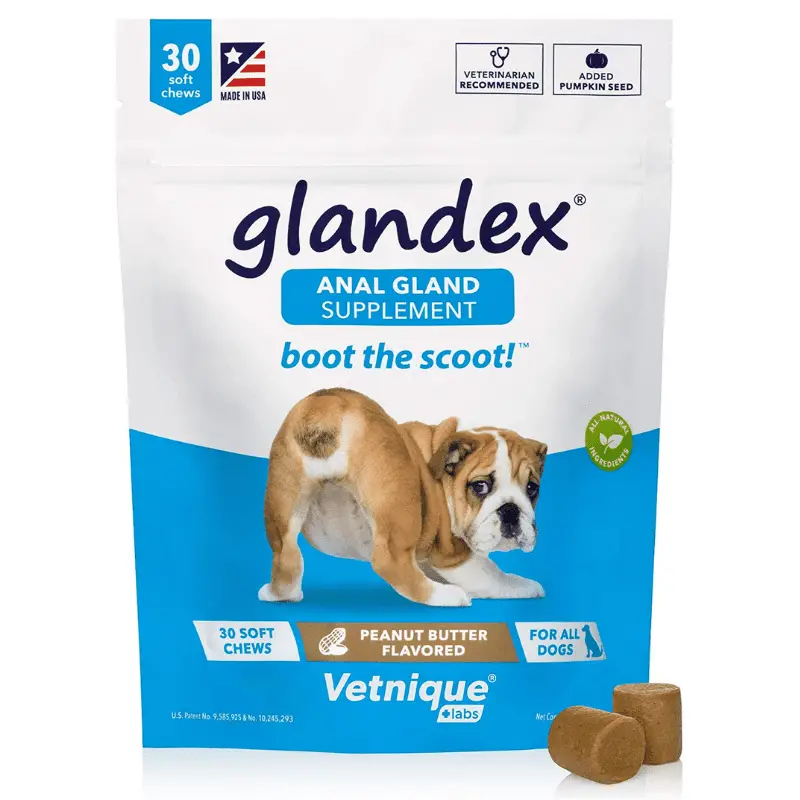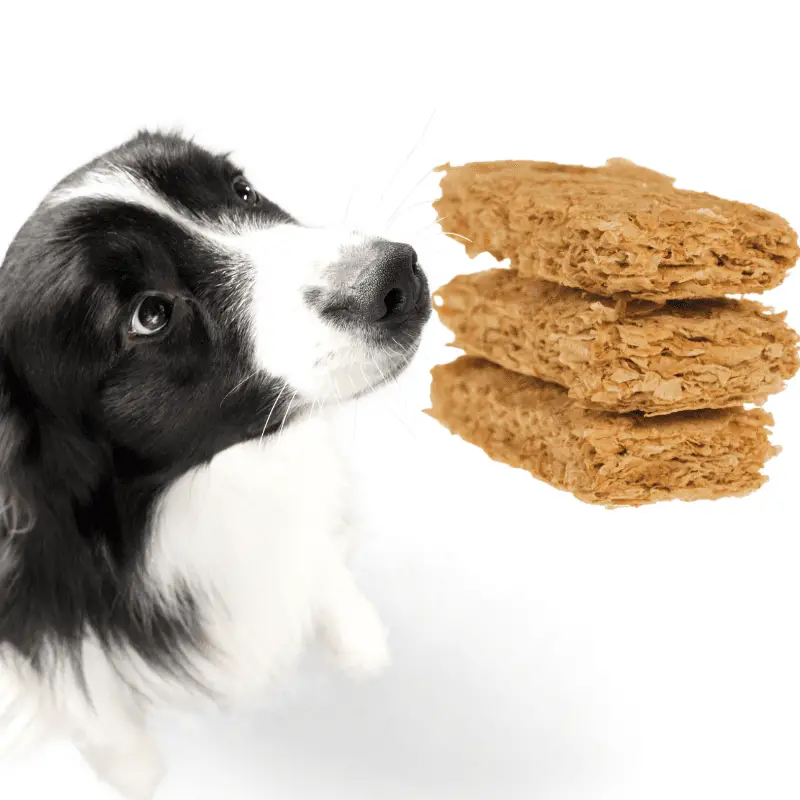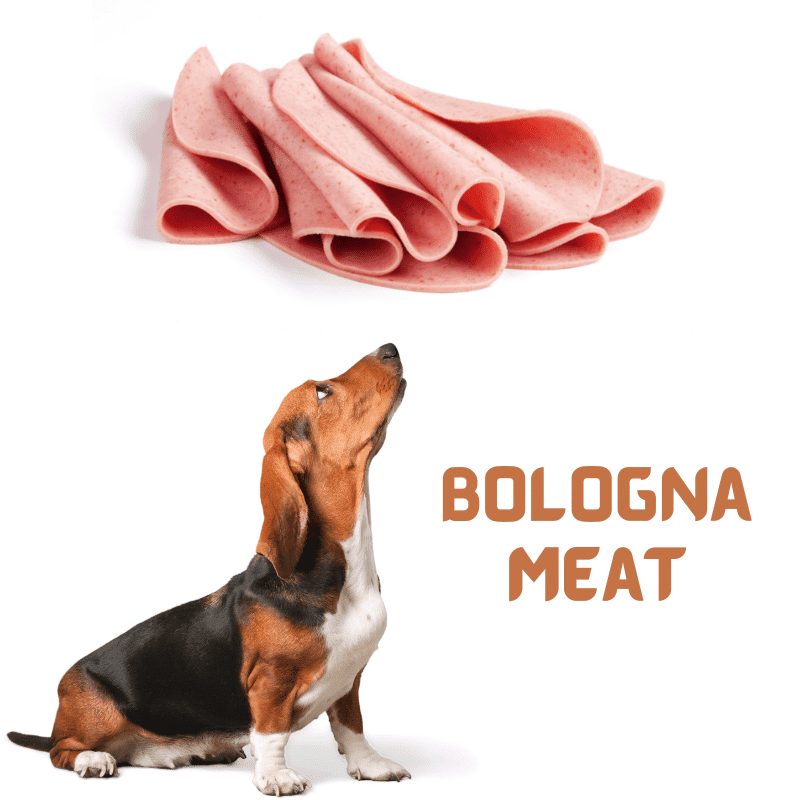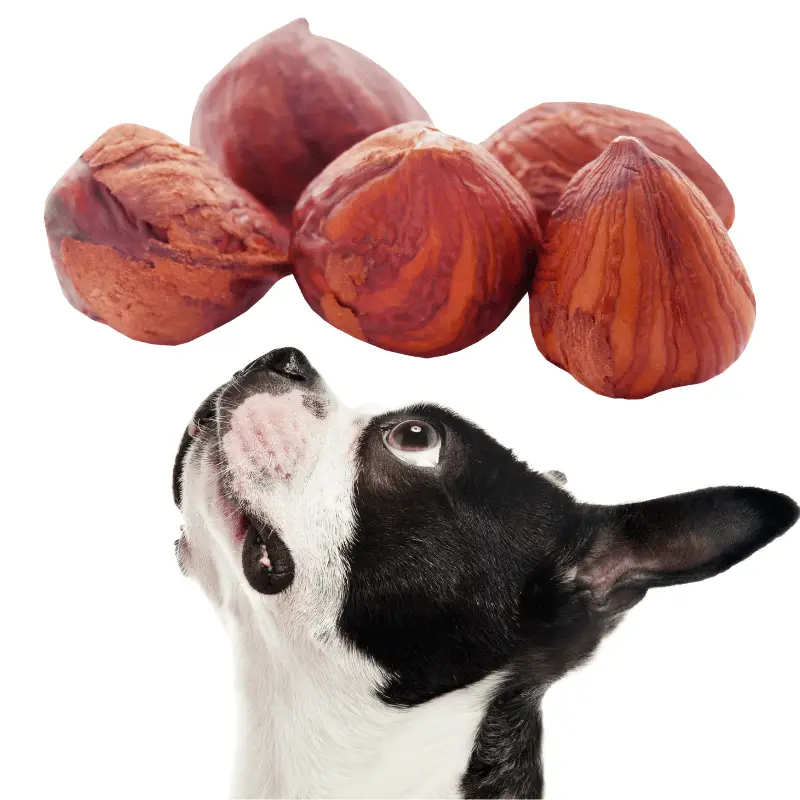Fibre is crucial for a dog’s digestive health, aiding in maintaining its gastrointestinal system. If your furry friend has lost interest in their food or is experiencing constipation, it could be due to a lack of fibre in their diet. Additionally, if your veterinarian has suggested increasing your dog’s fibre intake, Weetabix may be an option worth considering. Let’s explore whether serving Weetabix to your pup can provide them with the necessary fibre they need.
Feeding your dog Weetabix for fibre may not be the best permanent choice, as they contain added sugars, salt, wheat and gluten, which can pose health risks. It’s recommended to seek out alternative sources of fibre that are more suitable for your dog’s needs. If you’re in a pinch and have no other options, you can give your dog half a water-soaked Weetabix, depending on their size. However, opting for specially formulated fibre supplements for dogs is a better and safer option.
I gave my puppy extra fibre to help him pass bits of swallowed toys more easily and quickly. At the advice of our veterinarian, I fed him half a Weetabix, which resulted in finding plastic toy fragments in his faeces during his next walk. While Weetabix was a suitable temporary solution, I would consider alternative supplements if this occurs regularly. To avoid future incidents, I now provide non-plastic toys for my dog.
The below can help you find a better-suited permanent source of fibre.
Weetabix Ingredients
Wholegrain Wheat
Wheat, a type of grass, is widely used in various foods and even alcohol. Although dogs can consume wheat as part of their daily food allowance, feeding them Weetabix may exceed their recommended intake. It’s important to note that some dogs have wheat allergies similar to humans and may exhibit skin irritation, digestive issues, respiratory problems, ear infections or behavioural changes.
Here are some of the symptoms that dogs with a wheat allergy may exhibit:
1. Skin irritation: Dogs with a wheat allergy may develop itchy and inflamed skin, leading to excessive scratching and biting.
2. Digestive issues: Wheat allergies in dogs can cause vomiting, diarrhoea, and other digestive problems.
3. Respiratory problems: Some dogs with a wheat allergy may experience wheezing or difficulty breathing due to inflammation in their airways.
4. Ear infections: Allergies can also cause ear infections in dogs, leading to discomfort and pain.
5. Behavioral changes: In rare cases, dogs with allergies may become more irritable or anxious as they try to cope with their symptoms.
Sugar
Per serving of two biscuits contains 1.6 grams of sugar. Too much sugar in a dog’s diet can lead to obesity, dental problems, and even diabetes—another reason you should not give your dog Weetabix permanently.
Salt
Dogs need a certain amount of sodium in their diet. Salt should be calculated with their average daily food amount. Adding extra salt to a dog’s diet can be fatal. Your dog could suffer from sickness, diarrhoea, depression, high temperature, thirst, and seizures. If you want to add fibre to a dog’s diet, choosing Weekabix permanently isn’t the way forward due to the added salt.
Understanding Why a Dog May Need Extra Fiber in Their Diet
Dogs may need extra fibre in their diet for various reasons, such as:
1. Digestive Issues: Dogs with digestive issues like constipation or diarrhoea can benefit from a high-fibre diet. Fibre helps regulate bowel movements by adding bulk to the stool and promoting regularity.
2. Weight Management: High-fiber diets can help dogs feel full longer, aiding in weight management by reducing overeating.
3. Diabetes: Dogs with diabetes require a consistent fibre intake to help regulate blood sugar levels.
4. Anal Gland Problems: Some dogs may suffer from anal gland problems due to a lack of fibre in their diet. A high-fibre diet can help promote healthy anal gland function.
5. Aging: As dogs age, they may experience decreased digestive efficiency and slower metabolism; therefore, increasing dietary fibre intake can be beneficial for maintaining overall health and wellness.
It’s essential to consult your veterinarian before changing your dog’s diet, including adding extra fibre. Your vet can recommend the appropriate amount of fibre for your dog’s needs and health conditions.
Getting to Know Fibre
Fibre, also known as dietary fibre or roughage, is a carbohydrate in plant-based foods such as fruits, vegetables, whole grains, nuts and seeds. Unlike other carbohydrates like sugars and starches that are broken down and absorbed by the body for energy, fibre cannot be digested by the human digestive system. Instead, it passes through the digestive tract largely intact and helps to promote regular bowel movements, prevent constipation and maintain healthy digestion. Fibre also has numerous health benefits, including reducing cholesterol and regulating blood sugar levels.
The Importance of Fibre for Dogs
Dogs require fibre to maintain a healthy digestive system. Adequate fibre intake encourages the growth of beneficial bacteria in their gut, resulting in regular bowel movements and firm stools that are easy to pass. Additionally, fibre helps create an acidic environment within the intestine, preventing unwanted bacterial overgrowth.
A balanced gut is crucial for your furry friend’s overall health. It regulates bowel movements and keeps the colon clean, reducing the risk of diabetes, obesity, stomach upsets and colitis. Fibre also aids both diarrhoea and constipation.
Here are some ways you can add fibre to your dog’s diet:
- Add vegetables: Vegetables like carrots, green beans, and sweet potatoes are excellent sources of fibre for dogs.
- Use canned pumpkin: Canned pumpkin contains high levels of fibre and can be added to your dog’s food as a supplement.
- Switch to whole grains: If your dog eats kibble, consider switching to a brand that uses whole grains instead of processed ones.
- Feed fruits: Apples and bananas contain high levels of fibre and make excellent low-calorie dog treats.
- Consider supplements: Many fibre supplements are available on the market that can be added to your dog’s food if they need additional help with digestion.
Ideal Amount of fibre for a Dog
The amount of fibre a dog needs depends on its size, weight and breed. For example, some breeds are more prone to digestive problems than others due to their digesting food habits. Generally, you’ll want to look at each well-known brand’s packaging, which will have a recommended daily allowance for fibre as listed in the back panel. You can also consult a veterinarian.
Fibre supplements are necessary in many cases but should only be added after consulting the vet, who knows what dosage of fibre would work best based on age and health status.
Canine Fiber Overload
Excessive consumption of fibre can adversely affect a dog’s health, such as poor nutrition. The minerals in large doses can bind together and weaken, causing weight loss, sickness, diarrhoea, flatulence and an unhealthy coat. Therefore, it is crucial to slowly introduce the right amount of fibre to your dog’s diet while considering its breed, size and weight. Contacting your veterinarian for the appropriate amount for your furry friend is highly recommended.
What happens if dogs don’t get enough fibre? Constipation, diarrhoea and urgency of the toilet are all linked to fibre deficiency.
Does my dog need more fibre? As with humans, the dietary fibre function for dogs is to maintain the gastrointestinal system’s health. While most dogs will get the recommended amount from their daily food, some dogs need a little extra, which could be to bulk out their faeces so the anal glands can be expressed correctly when going to the toilet. It’s also best if your dog empties naturally rather than manually.
Impacted Anal Glands
Anal glands are small sacs on either side of a dog’s anus. They contain a smelly, oily substance that marks territory and communicates with other dogs. When these glands become impacted or blocked, they can cause discomfort and pain for your furry friend.
Here are some common symptoms of impacted anal glands in dogs:
- Scooting: Dogs may drag their rear end along the ground to relieve the pressure caused by the impacted anal glands.
- Licking or biting: Dogs may excessively lick or bite at their hindquarters to alleviate the discomfort caused by impacted anal glands.
- Foul odour: Impacted anal glands produce a strong, unpleasant smell that can be noticeable even from a distance.
- Painful defecation: The pressure from the impacted gland can make it painful for your dog to pass stool, leading them to strain during bowel movements.
- Swelling or redness around the anus: In severe cases, you may notice swelling or redness around your dog’s anus due to inflammation caused by the impaction.
- Loss of appetite: If your dog is experiencing significant pain and discomfort due to their impacted anal gland, it may lose interest in food and water.
- Agitation or restlessness: Your dog may seem restless and agitated if they are uncomfortable due to its impacted anal gland.
If you notice any of these symptoms in your furry friend, you must take them to see a veterinarian promptly. Impacted anal glands can lead to more severe health issues if left untreated, such as infections and abscesses requiring surgical intervention.
Effective Way to Relieve Your Dog’s Anal Gland Problems

As an Amazon Services LLC Associates Program member, we earn fees by linking to Amazon.com and its affiliated sites. By clicking on and/or purchasing products through our links, you may provide us with a small commission at no additional cost to you. We only suggest items we believe and think you will enjoy. Thank you for your continued support!
Conclusion
If your dog requires more fibre, you can supplement its diet or switch to high-fibre food. However, if this is a one-time occurrence and no other options are available, you may give your dog a water-soaked Weetabix without added sugar. Nonetheless, exploring alternative ways of increasing your furry friend’s fibre intake is recommended. It’s crucial to consult with your veterinarian before adding extra fibre and limit the amount as necessary. In summary, refrain from using Weetabix as a long-term solution for your dog’s dietary needs.












